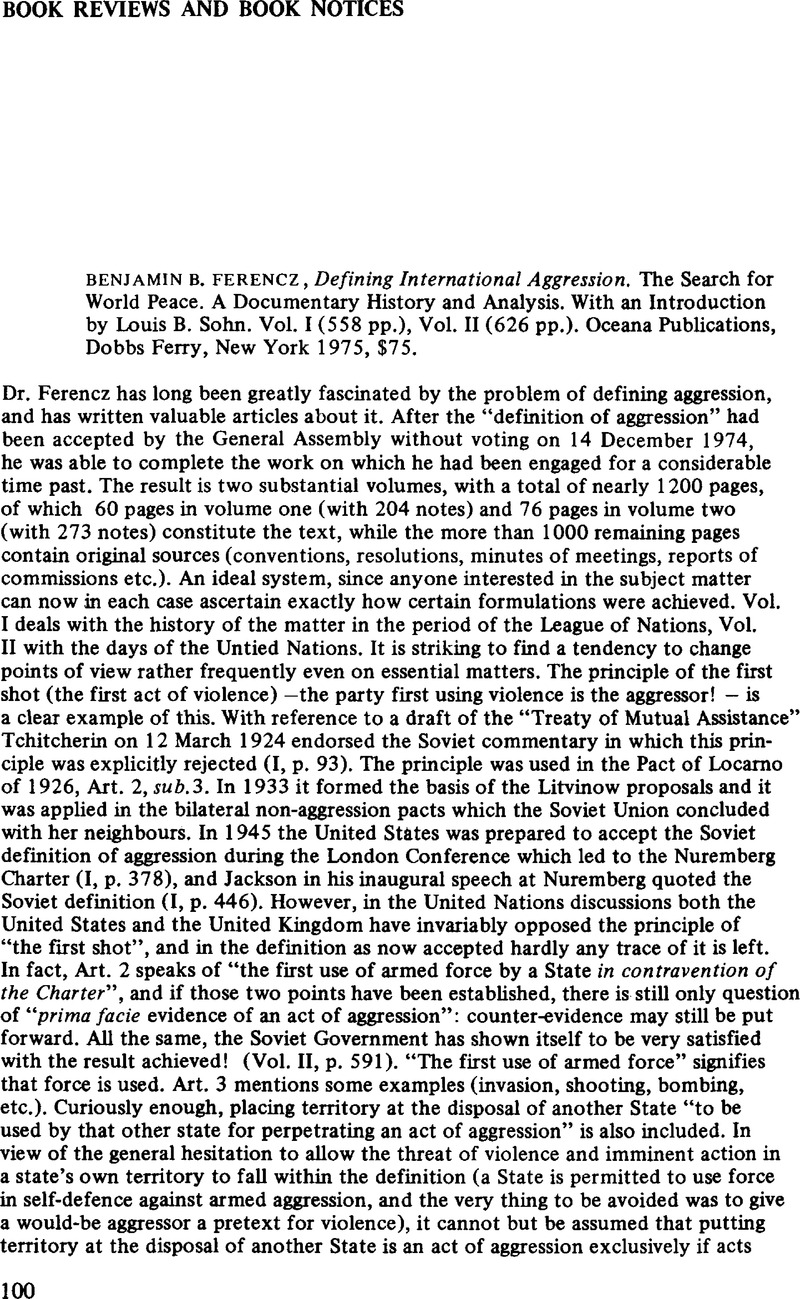No CrossRef data available.
Published online by Cambridge University Press: 21 May 2009

1. E.g. on the words “at the present stage” in the preamble. These words stem from an earlier Soviet draft, which omitted “indirect aggression” and started “at the present stage” with armed force. The French Government later interpreted these words as a reference to the present age, in which so many “weapons of mass destruction” are available (Vol. II, p. 22).Google Scholar
2. Thus, Art. 5 has “are” instead of “is” (Vol. II, p. 45).
3. Russell, Ruth B.: A History of the United Nations Charter, The Role of the United States 1940–1945, The Brookings Institution, 1958, p. 465.Google Scholar
4. But it should likewise be pointed out that the Resolution, sub 3, is also addressed to all States and appeals to them “to refrain from all acts of aggression and other uses of force contrary to the Charter and the Declaration on Principles of International Law concerning Friendly Relations and Co-operation among states in accordance with the Charter of the U.N.”.
5. Military force used in other cases may indeed be legitimate, as is the case with the force that is ordered or recommended by the Security Council, or recommended by the General Assembly. The United Nations may legitimise the use of force in cases other than the action against an “armed attack”, e.g. the Security Council in the case of “a threat to the peace” (the S.C. considered the continuation of the illegal racist regime in S. Rhodesia “a threat to the peace”). The General Assembly has conferred on peoples the right to use force against “apartheid” or colonial exploitation. The “auctoritas” from the classical “betlum justum doctrine” has here been transferred from the sovereign State to the United Nations.
6. More about this in: Röling, B.V.A., Die Definition der Aggression, in Recht im Dienst des Friedens, Festschrift für Eberhard Menzel, Berlin 1975, pp. 387–403.Google Scholar
7. More about this in: Röling, B.V.A., The Legal Position of Rebels and Rebellion, in Journal of Peace Research (Oslo), 1976, pp. 149–163.CrossRefGoogle Scholar